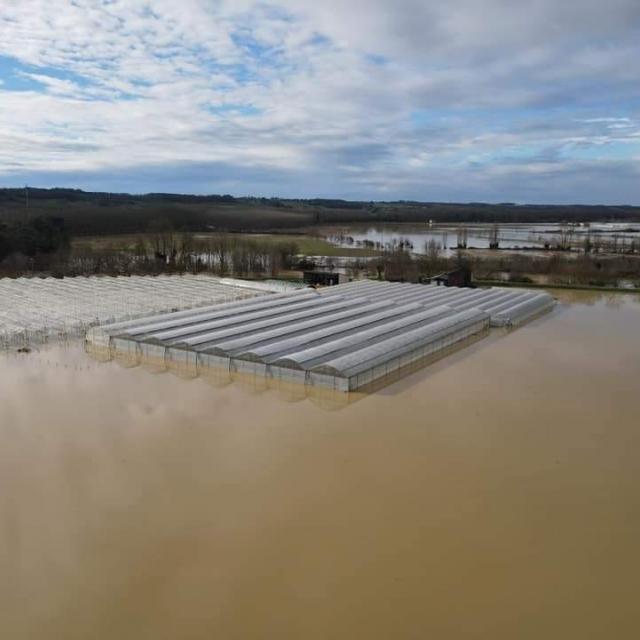We travelled to the Lot-and-Garonne department to meet the farmers whose land was flooded some ten days ago, in early February. The water has subsequently subsided, but we are going to see that the farmers are still suffering from the effects of the flooding.

This region is situated at the confluence of three rivers, the Lot, Garonne and Baise, a tributary of the Garonne. I was received by Mr. Girardi, the mayor of Aiguillon and vice-president of the Lot-and-Garonne chamber of agriculture. He explained to my why the floods occurred: “The flow of the River Lot is controlled by the hydroelectric dams and it rarely overflows, but it is a different story for the Garonne, one of the wildest rivers in Europe”.
He continues: « This is the most diversified agricultural region in France: we produce strawberries, kiwi fruit, aubergines, sweet peppers and beetroot as well as field crops such as wheat, maize, soya…No less than 70 different kinds of crops are grown in the department”. This progress is explained by the fact that the Lot-and Garonne is a region with an abundance of water, having little woodland compared to the Dordogne and it has a high level of immigration (from Italy, Portugal and Poland).
Mr. Girardi, now happily retired and mayor of the town of his birth, used to be a strawberry producer and he knows the local farmers very well. He was one of the first to develop the soilless production of strawberries in France, after making a number of trips to Argentina and Holland. Nowadays, there are more than 200 producers of strawberries grown in a soilless systemin the department.
We went to meet two farmers whose fields had been flooded. Mr. Patrick Pol, who grows maize (corn) and strawberries, met us in his field.We could see a pivot in the distance. Mr. Pol was affected by the Baïse flooding. He owns 40 acres of cultivated land spread across two sites and the whole area is irrigated by 6 pivots. All of his fields are susceptible to flooding. This flood was exceptional, the worst since 1981 and his whole farm was under water. He explained to us: “beyond 8.50 metres, the water spills over onto the field”. Despite his misfortune, he escaped unscathed compared with his colleagues because none of his fields were under cultivation at the time of the flooding. On the other hand, the electric control panel on one of his pivots was submerged under water and it had to be sent for repair. Furthermore, his dikes have begun to give way. He explained to us “There is a problem with maintaining the dykes (dikes or levees). We no longer have the right to cut down the trees on the banks of the rivers. However, some of them are 25 metres in height and when the pressure of the water is too great they collapse and carry the river bank with them.” He also discussed the problem of the coypu and badgers, which dig underground passages alongside the rivers thus weakening the banks. “For several years now it has been forbidden to hunt these species”, he complains. “It is 40 years since anyone did anything to maintain the dykes”. Now, all we can do is wait for the saturated ground to dry out. We will then be able to cultivate the land. I asked him about the time frame. “that depends on the weather. The weather forecast is good so it shouldn’t be too long”.
